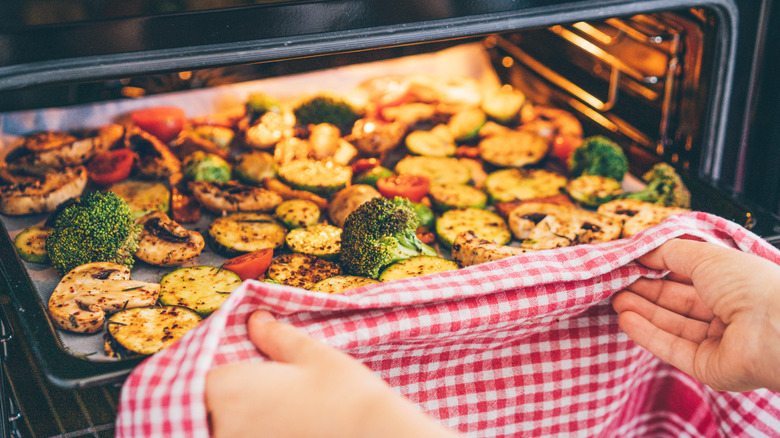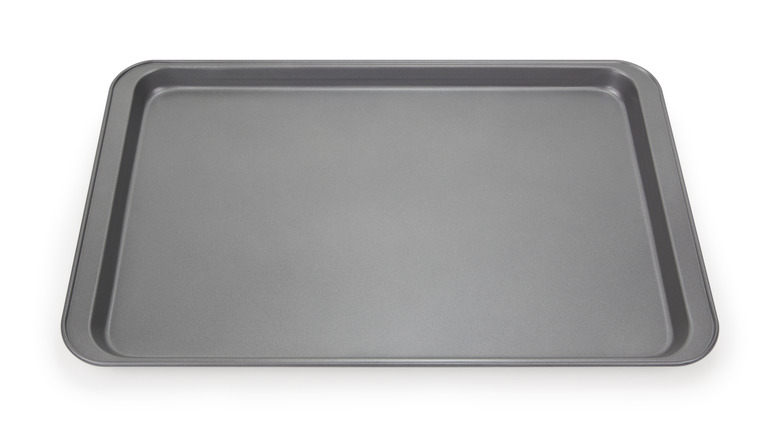Here's What Causes Sheet Pans To Warp In The Oven
The culprit behind your metal sheet pans popping and warping in the oven is fairly obvious: it's the heat. However, considering just how heat and metal interact will lead you to better baking practices (and not to mention flatter pans!)
You may remember from middle school science class that heat causes metal to expand. However, your baking pan doesn't heat up evenly, which is necessary to prevent warping. The base of your sheet pan is thin and wide with a ton of surface area–all of which faces directly towards the burners of most ovens. The pan's short ridged rim, on the other hand, has relatively little surface area, with only the thin edge facing into the burners above. As such, the base of the pan expands far more quickly than the rim.
The slower-expanding wall acts just like a belt that won't give way to a full tummy after a heavy thanksgiving dinner without unbuckling a notch or two. Except in this case, it is the structure of the thin metal sheet pan that buckles, pops, and twists as a result. Ironically, manufacturers often design their pans with thicker walls to prevent warping, but this just makes the temperature differential even wider.
There is good news, however: this warping doesn't really harm your pan, nor does it impact its ability to help cook your food. Moreover, it's quite easy to prevent it from happening in the first place.
How to prevent baking sheets from warping
There is a near-foolproof way to prevent warping: let the pan preheat with the oven. This allows more time for the heat to slowly penetrate the entire pan. Yes, the base still heats up quicker, but at lower preheating temperatures, the heat differential between the base and walls isn't great enough to cause buckling.
However, a cheap aluminum pan may still eventually warp even if you preheat it religiously. It may, for example, feature a nonstick coating which throws a wrench in how the pan would otherwise handle heat distribution between its base and walls. In many other cases, cheap baking pans are just too thin or lightweight to have any real structural integrity in the first place.
A good baking sheet, on the other hand, is usually made of thicker stainless or aluminized steel (shoot for 18 ga or lower). They often feature rolled edges that improve stability without adding a bunch of extra heat-sinking mass. You can also spot a quality pan by a slight concave shape or ridged pattern on the base; these designs give the middle of the pan space to expand vertically before pushing outwards into the more rigid walls.
Quality sheet pans are better at distributing heat and less prone to cold spots, allowing for faster and more consistent cooks. Moreover, preheating a good pan really unlocks its best virtues, since your food begins cooking at the right temperature the second it hits the metal. This method is especially useful for reheating soggy french fries, or caramelized roasted veggies to perfection.

